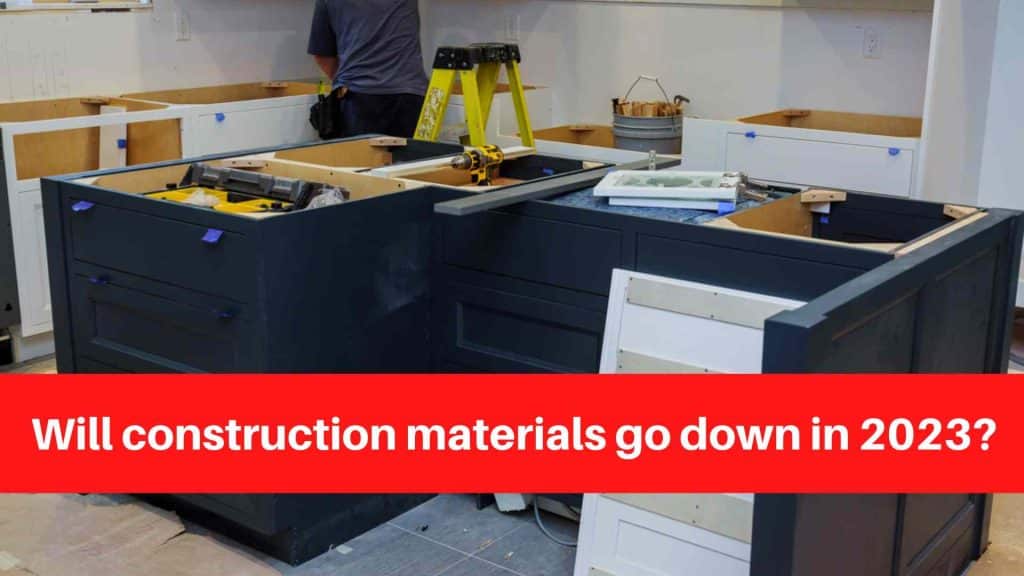Understanding the Construction Material Cost Outlook for 2023
The cost of construction materials plays a significant role in determining the overall expenses of construction projects. Understanding the trends and potential fluctuations in material costs is crucial for construction professionals and individuals planning construction or renovation projects. In this article, we’ll explore the outlook for construction material costs in 2023, shedding light on the projected changes and how they may impact the industry.
Current Trends in Construction Material Costs
1. Historical Average Increases:
Historically, construction material costs have experienced annual increases ranging from 2% to 4%. These increases are driven by factors such as supply and demand dynamics, raw material costs, transportation expenses, and global market conditions.
2. Recent Escalation:
In recent years, the construction industry has faced significant challenges related to rising material costs. The COVID-19 pandemic, supply chain disruptions, and increased demand for construction materials have led to unprecedented price surges, causing concerns for project budgets and timelines.
3. Projected Cooling of Inflation:
According to a report by CBRE, leading real estate services and investment firm, the overall cost inflation for construction materials is expected to cool down by the end of 2022. The report predicts a return to typical levels of cost inflation by mid-2023, with annual increases aligning with historical averages of 2% to 4%.
Factors Influencing Construction Material Costs
1. Supply and Demand Dynamics:
Supply and demand imbalances significantly impact material costs. As construction activity increases, demand for materials rises, potentially leading to price hikes. Conversely, during periods of decreased demand or excess supply, material costs may stabilize or even decrease.
2. Raw Material Prices:
Fluctuations in the prices of raw materials, such as steel, lumber, concrete, and copper, directly impact construction material costs. Factors like global market conditions, trade policies, and natural disasters can cause volatility in raw material prices.
3. Transportation and Logistics:
Transportation and logistics costs contribute to the overall expenses of construction materials. Fuel prices, freight charges, and shipping delays can influence material costs, especially for imported materials.
4. Government Regulations and Policies:
Changes in government regulations, trade policies, tariffs, and taxes can affect the cost of construction materials. Adjustments to import or export duties, environmental regulations, or subsidies can impact the overall pricing landscape.
Implications for the Construction Industry and Projects
1. Budgeting and Cost Estimation:
The projected cooling of inflation in construction material costs by mid-2023 provides some relief for budgeting and cost estimation processes. Construction professionals and project stakeholders can anticipate a return to more predictable pricing levels, allowing for more accurate financial planning.
2. Project Timelines and Decision-Making:
Understanding the anticipated changes in material costs for 2023 enables better decision-making regarding project timelines. With a clearer picture of cost trends, project managers can assess the optimal timing for procurement and construction activities.
3. Material Selection and Alternative Options:
As construction material costs stabilize, it becomes crucial to carefully evaluate material options and consider alternatives that offer cost savings without compromising quality. Exploring sustainable materials, value engineering, and efficient supply chain management can help mitigate the impact of material costs.
Navigating Construction Material Costs in 2023
1. Collaboration and Communication:
Maintaining open lines of communication with suppliers, contractors, and project stakeholders is key to adapting to changing material costs. Regularly reviewing pricing updates and exploring potential opportunities for bulk purchasing or long-term contracts can help mitigate cost fluctuations.
2. Strategic Sourcing and Supplier Relationships:
Developing strong relationships with reliable suppliers and exploring different sourcing options can help secure favorable pricing and minimize the impact of material cost fluctuations. Conducting thorough market research, obtaining multiple quotes, and negotiating contracts with suppliers can contribute to cost savings.
3. Value Engineering and Cost Optimization:
Engaging in value engineering exercises during the project planning phase can help identify opportunities for cost optimization without compromising quality. Collaborate with architects, engineers, and contractors to explore design modifications, material substitutions, and construction methods that can reduce expenses.
4. Monitoring Market Trends:
Stay informed about market trends, industry news, and economic forecasts that can impact construction material costs. Regularly review industry publications, attend conferences, and engage with professional networks to stay updated on the latest developments.
5. Flexibility and Adaptability:
Maintaining a flexible approach to material selection and project execution can help navigate any unexpected changes in material costs. By remaining adaptable and open to alternative options, you can adjust your plans accordingly to optimize your budget and minimize the impact of cost fluctuations.
While the construction industry has recently faced significant challenges related to rising material costs, there is a positive outlook for 2023. According to experts, the inflation in construction material costs is expected to cool down, returning to historical averages by mid-2023. This projected stabilization provides an opportunity for construction professionals and project stakeholders to plan and execute projects with more predictable pricing.


